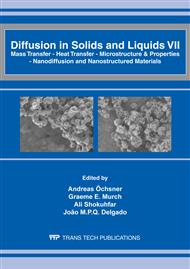p.377
p.383
p.388
p.394
p.400
p.405
p.410
p.416
p.422
Assessment of Heat Affected Zone of Submerged Arc Welding Process through Digital Image Processing
Abstract:
Submerged arc welding (SAW) is a high quality, high deposition rate welding process commonly used to join plates of higher thickness in load bearing components. This process of arc welding provides a purer and cleaner high volume weldment that has relatively a higher material deposition rate compared to the traditional welding methods. A common issue in the application of SAW process raises a concern about the uncertainties involved with the heat affected zone (HAZ) in and around the weldment. The most intriguing issue is about HAZ softening that imparts some uncertainties in the welded quality. It increases the probability of fatigue failures at the weakest zones caused by the heating and cooling cycle of the weld zone. An attempt has been made in this paper to assess the heat affected zone of submerged arc welding of structural steel plates through the analysis of the grain structure by means of digital image processing techniques.
Info:
Periodical:
Pages:
400-404
Citation:
Online since:
April 2012
Authors:
Price:
Сopyright:
© 2012 Trans Tech Publications Ltd. All Rights Reserved
Share:
Citation:


